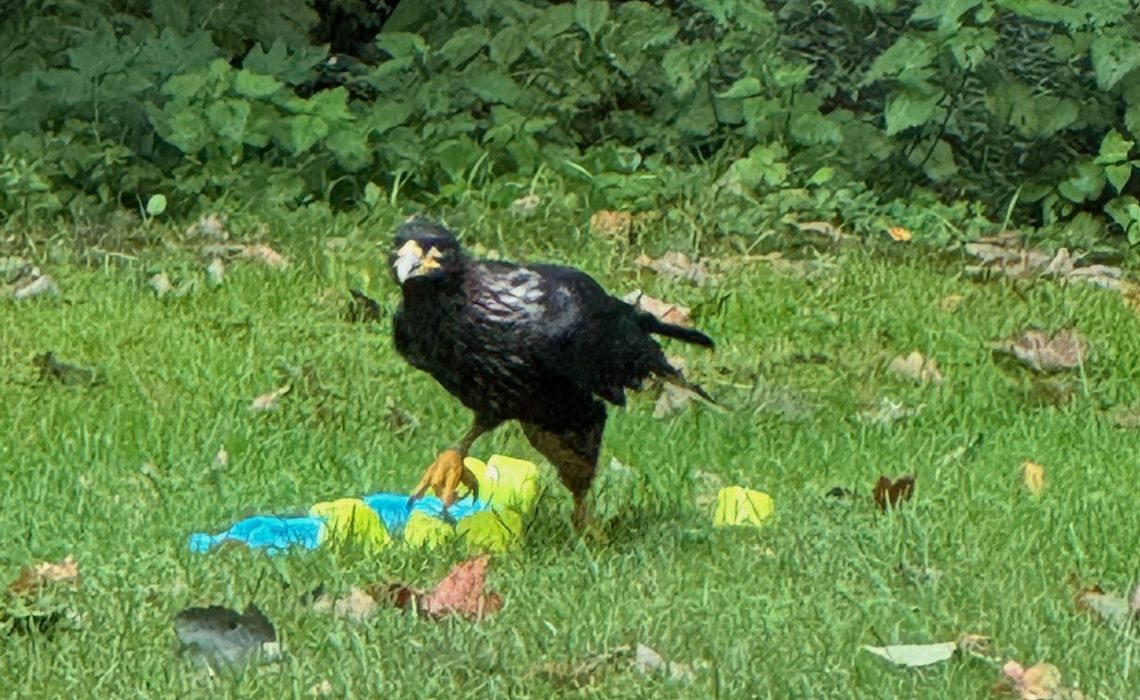
At The Loch Lomond Bird of Prey Centre
Come and meet the characters at the Loch Lomond Bird of Prey Centre – and I don’t mean Stewart and Kevin, the very hands on owners and falconry experts at the centre. But the many rescued and restored to health hawks, owls, raptors and eagles and then some unexpected visitors like Delta, the Caracara.
But first, let me tell you why this centre is so important, why we actively support them and why you might consider doing the same.
Have a listen to my audio introduction above.
Why Are Centres Like Loch Lomond Bird of Prey Centre Important?
The Loch Lomond Bird of Prey Centre plays a critical role in conserving, educating, and rehabilitating birds of prey in Scotland. Located along the shores of Loch Lomond at the Alexandria end. The centre provides a safe haven for owls, falcons, hawks, and eagles, many of which have been rescued or are endangered and many of which would not survive if they were returned to the wild.
The ultimate goal is to provide a safe environment for birds that cannot be released into the wild, while using their presence to educate the public on conservation efforts.
Here, they not only work to rehabilitate injured birds with the aim of releasing them back into the wild, if that’s an option, but also educating the public on the ecological importance of these predators. Through interactive sessions and fun, informative daily flying shows, visitors gain awareness of the threats faced by birds of prey, such as habitat loss and illegal hunting, fostering greater appreciation and support for their conservation.
You have to get close to nature to understand how to preserve it, that’s difficult with birds of prey – this centre presents an opportunity to do that with birds that, for a whole number of reasons, could only survive out their natural life here.
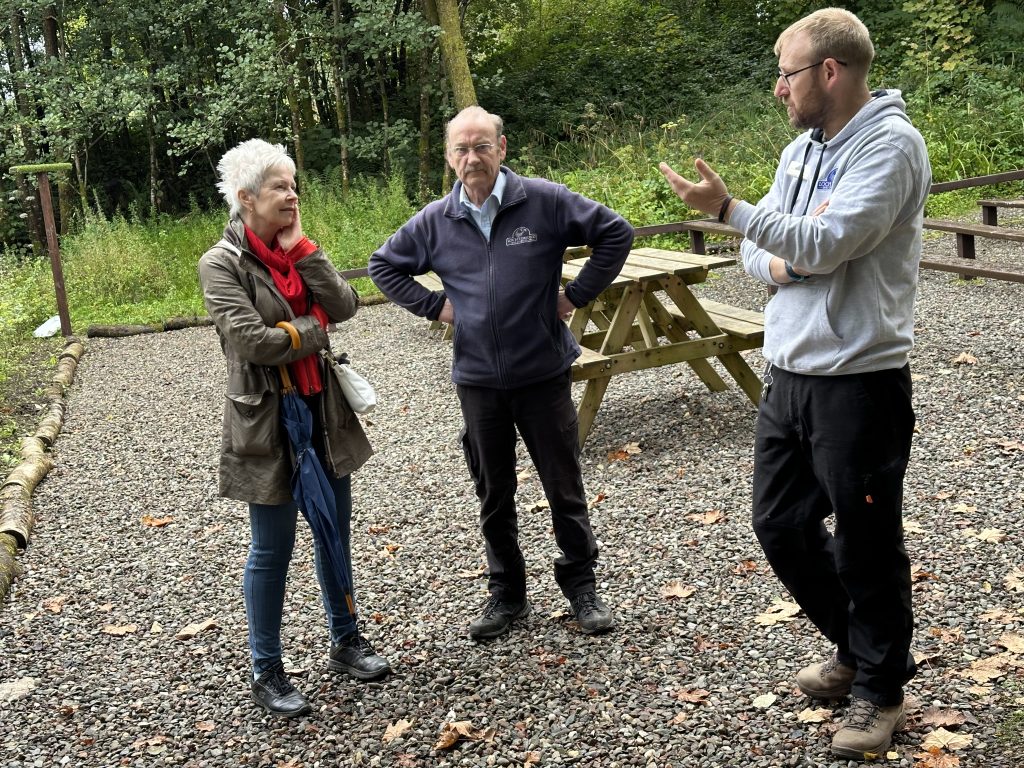
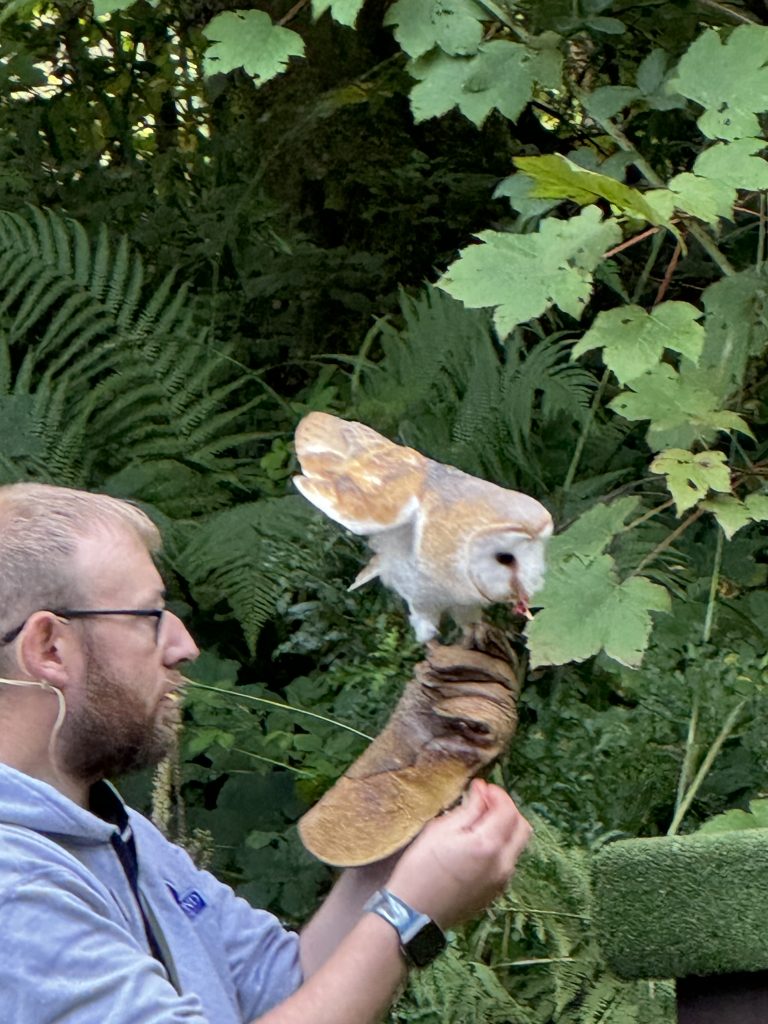
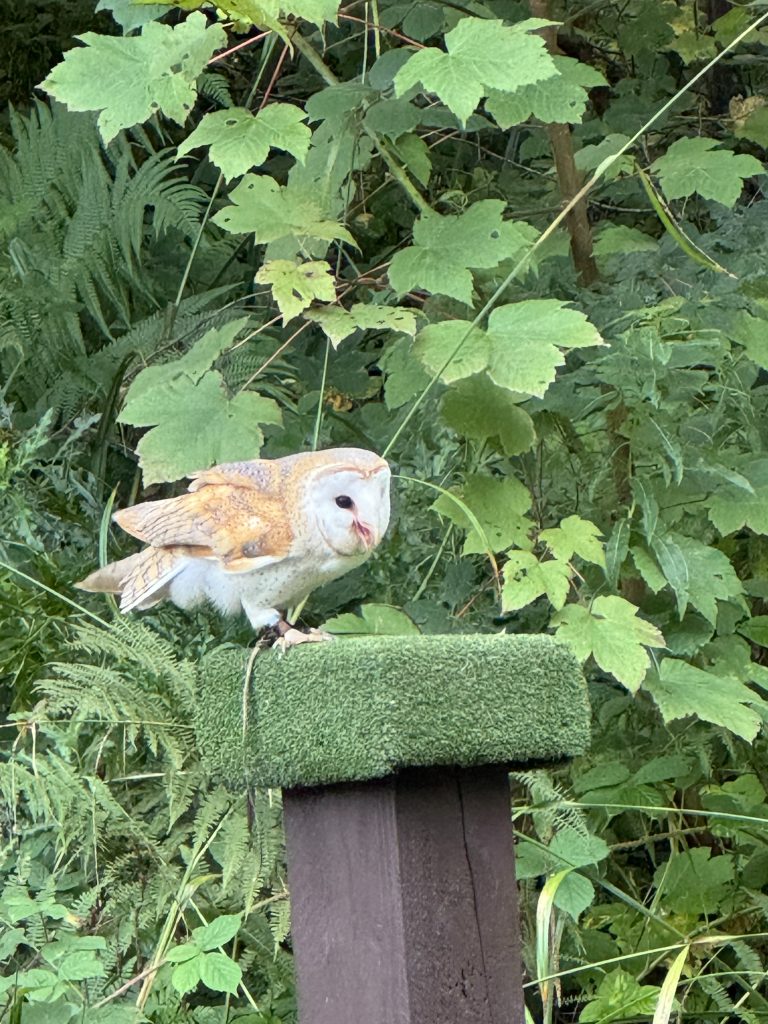
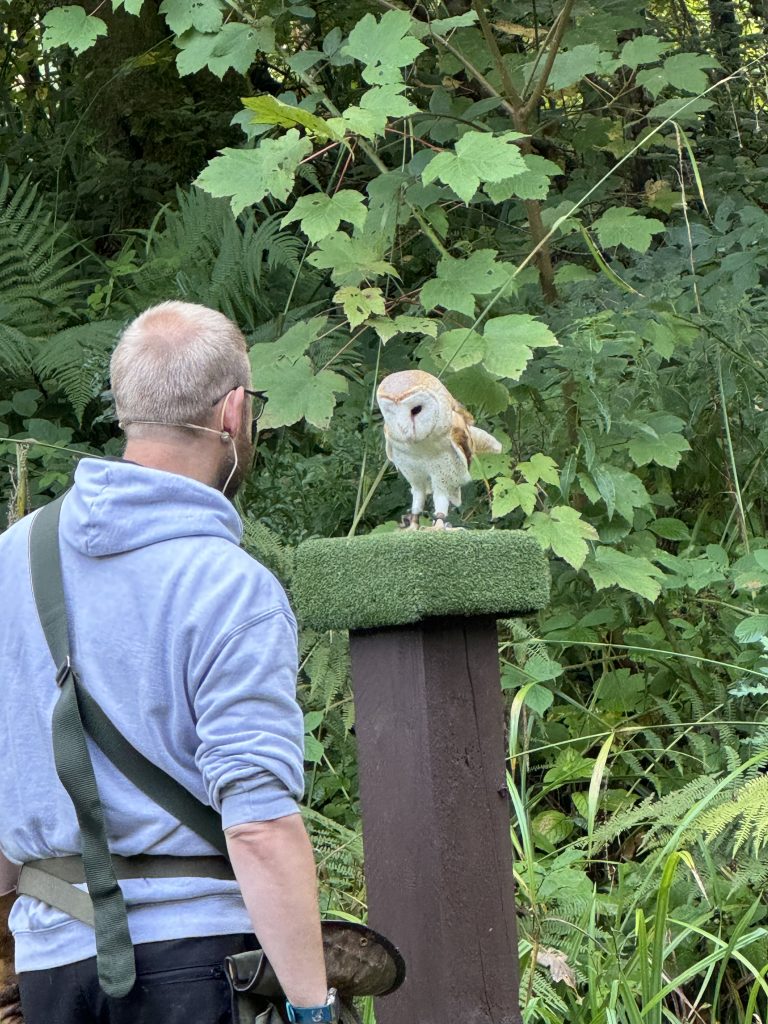
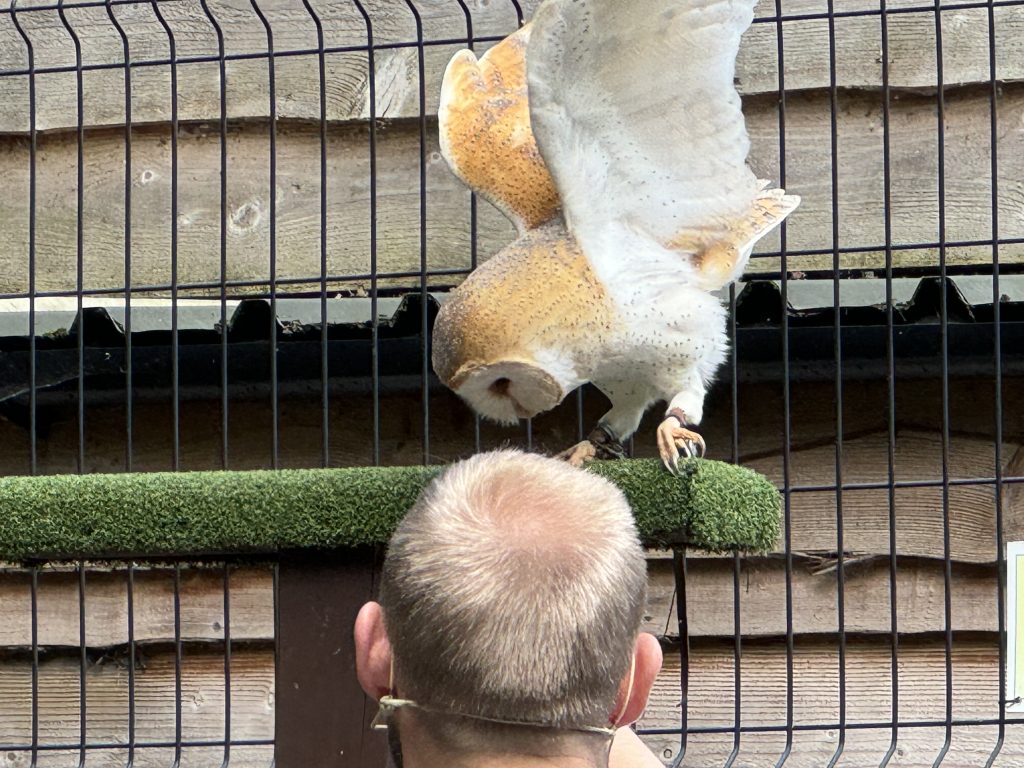
When we were there this September, one of the stories Kevin told during a flying show stuck in my mind – a local farmer with a rodent problem that wouldn’t go away. Baiting boxes with poison wasn’t effective and of course primarily could be poisoning the owls and other wildlife. Instead the farmer installed roosting and nesting places for the Barn Owls, maximising the habitat on his farm to encourage them and, although it took a little while, nature rebalanced itself with both happy Barn Owls, minimal rodents and a happy farmer. This is just one example.
Delta the Striated Caracara
And here’s another example. Delta came to the centre at the beginning of 2024 and was displaying strange behaviour, shredding feathers, calling constantly and throwing herself on her back. Caracara’s are highly intelligent and curious birds of prey native to the Falkland Islands and parts of South America. Unlike many raptors, they exhibit more opportunistic and scavenger-like behaviours, often foraging along coastlines, scavenging carcasses, and even investigating human campsites for food. Known for their playfulness, they frequently engage in playful or investigative interactions with objects and other birds.
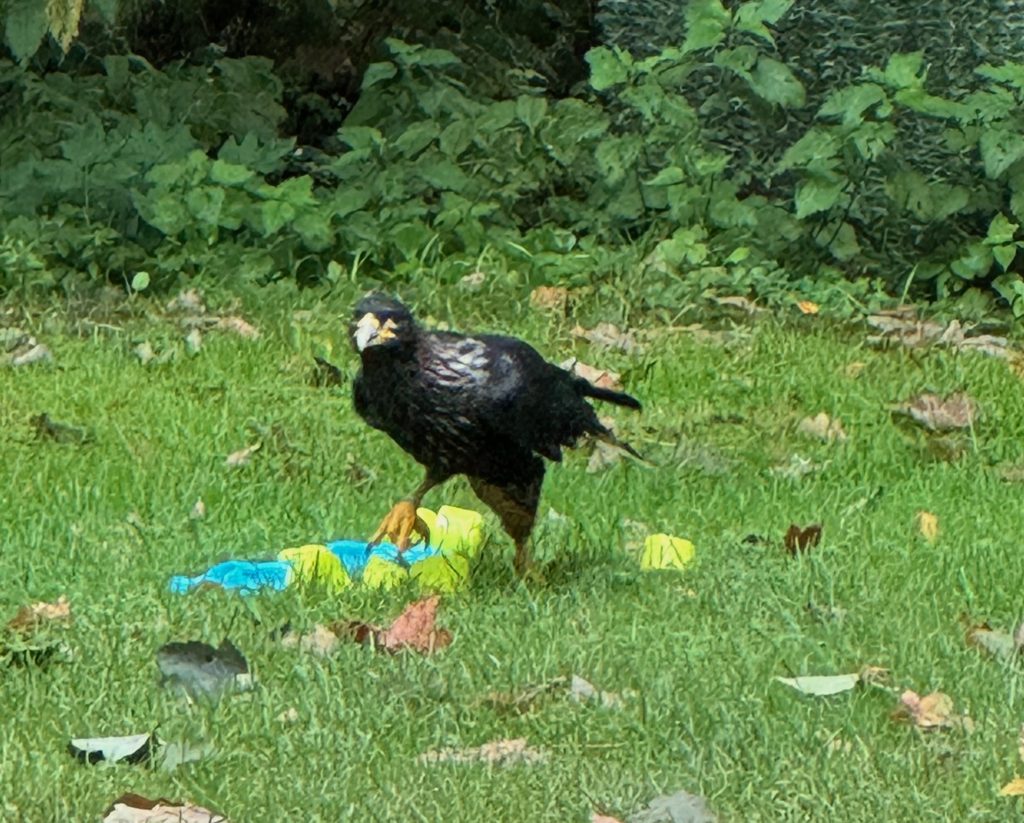
It’s taken much hard work and understanding of what is ‘normal’ Caracara behaviour to nurse Delta back to a healthy bird. The centre staff have Delta out every day, giving her new challenges of where to find her food, new toys and puzzles to keep her active mind busy. Delta had been in captivity where her natural behaviour wasn’t understood and resulted in a very stressed bird. She was amazing to watch during the show.
She has such a good relationship with the staff now. Bold and inquisitive, they will often approach humans and can learn to recognise and interact with specific individuals over time.
Learning about birds of prey at the Loch Lomond Bird of Prey Centre contributes to a healthier planet by fostering understanding, promoting conservation, educating the public, and inspiring future generations to become environmental stewards.

Fuelling a Greener Future, One Story at a Time. Every small step we take – from reusable bags to conscious consumption – ripples outwards, creating a wave of hope. Let’s rewrite the story of our planet, one click at a time. I believe in the power of storytelling. By sharing inspiring environmental initiatives, unsung sustainability heroes and practical tips, I aim to amplify the voices making a difference. Imagine a world where everyone is empowered to take action, one small change at a time. ‘Buy Me A Coffee’ donation is a quick and easy way to offer a small, one-off donation, that helps keep this platform running and allows me to continue sharing these vital stories. Just click the “Donate” button (top right corner). Every contribution, no matter the size, makes a difference. Thank you for being a part of this journey.
How Did We Find Out About Them?
My 60th birthday, we hired a ‘castle house’ in Callander for the weekend – The Gart – with 21 of us. Loch Lomond Bird of Prey Centre agreed to come with some of the birds for a falconry display in the grounds.
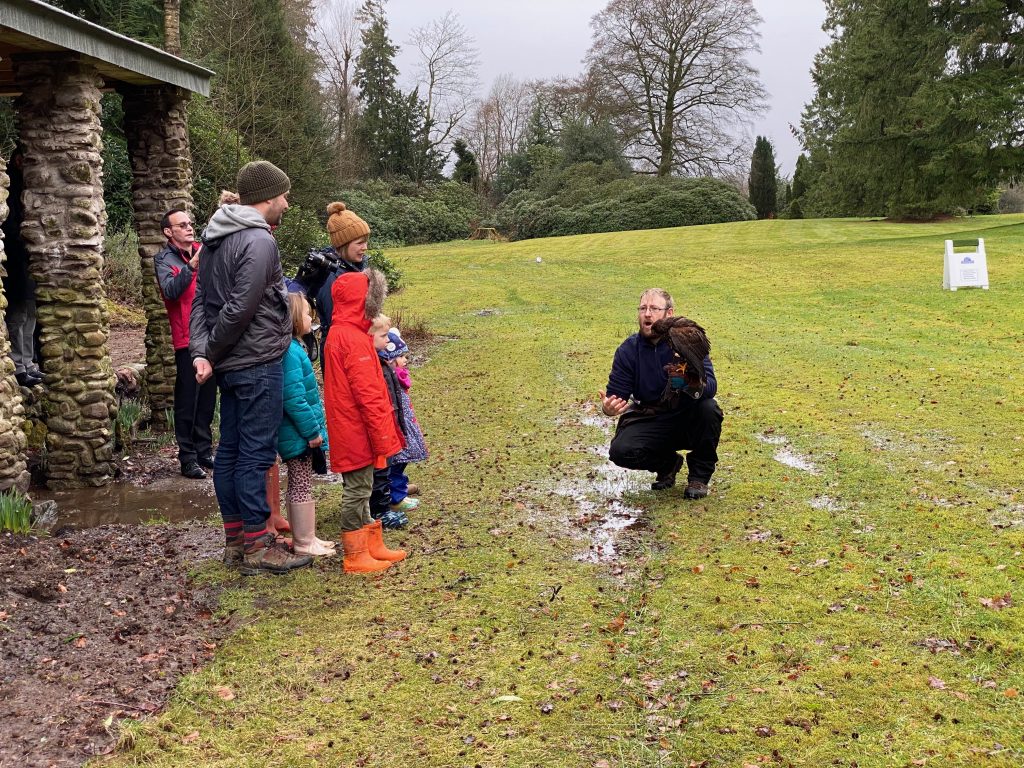
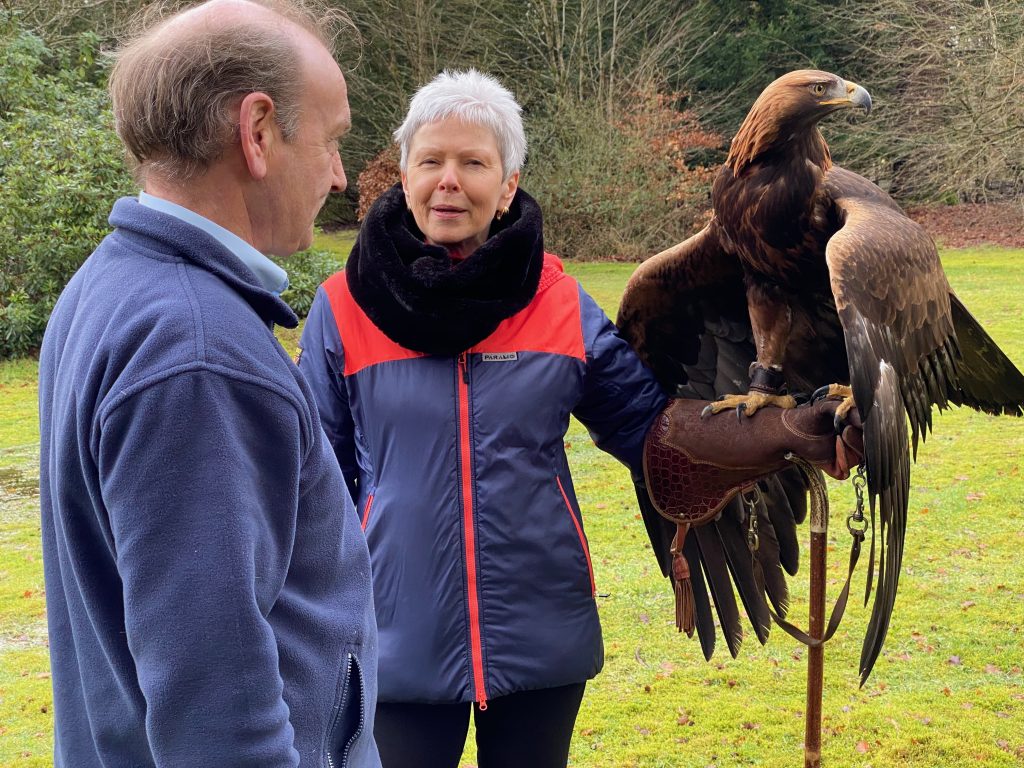
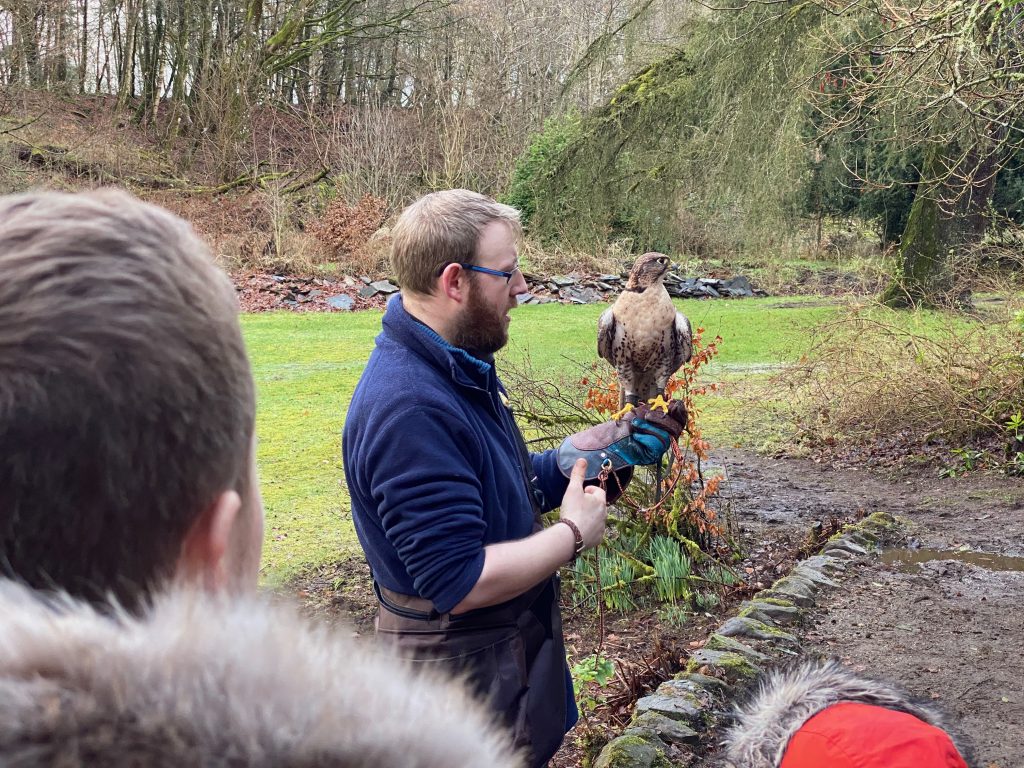
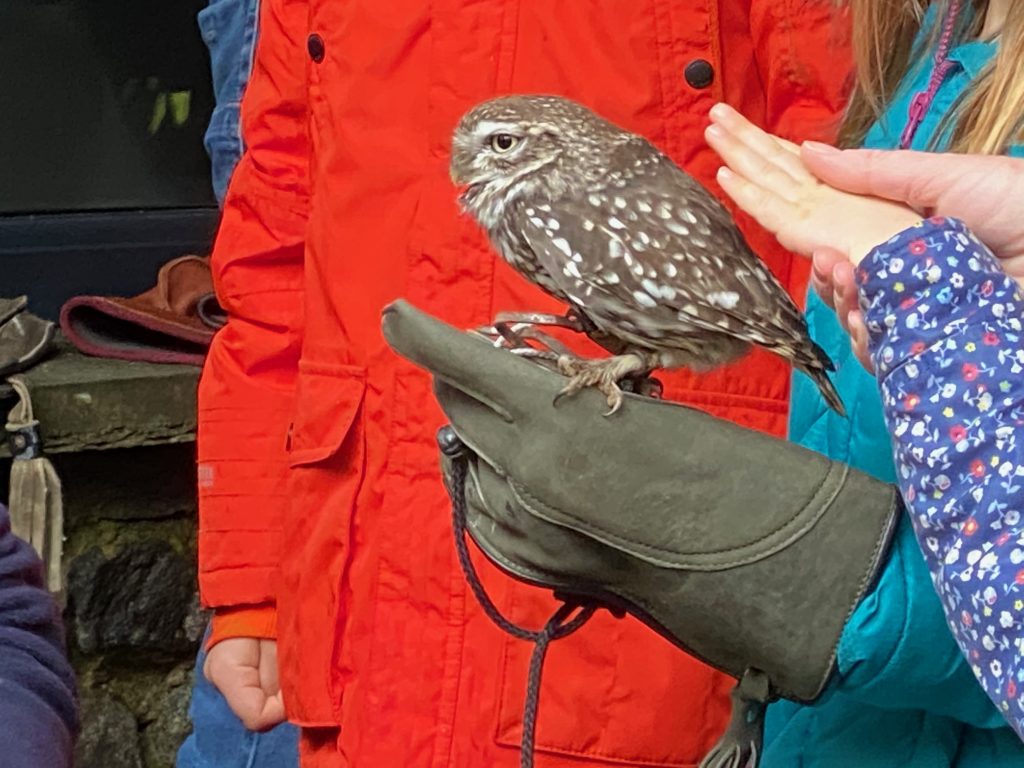
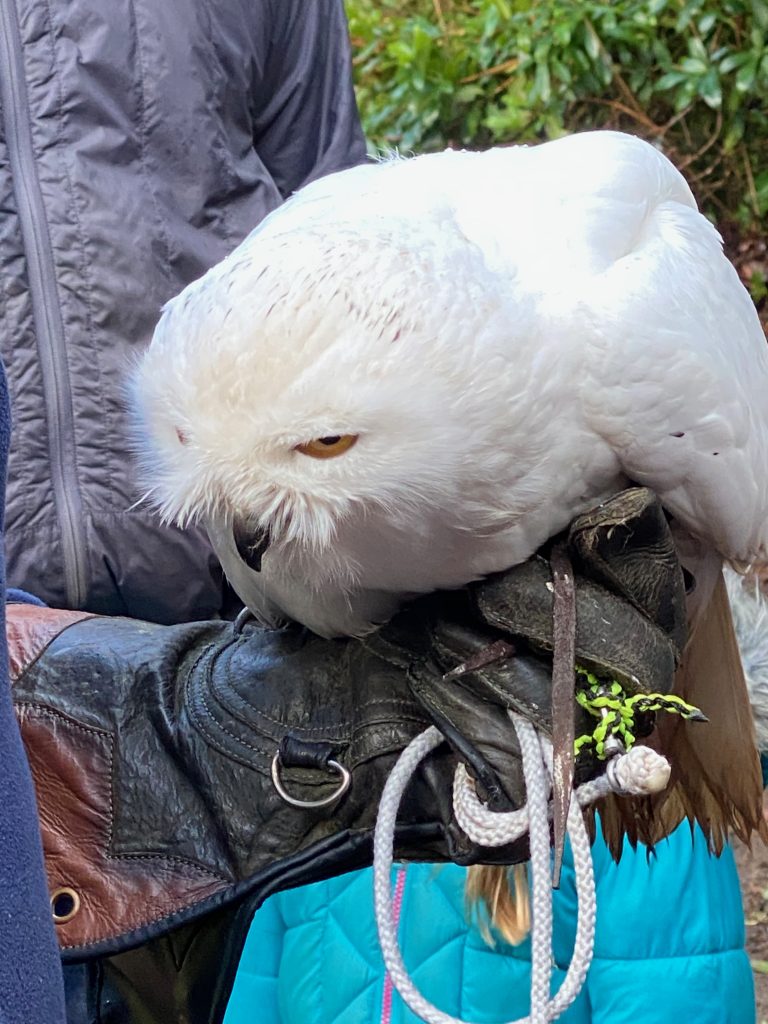
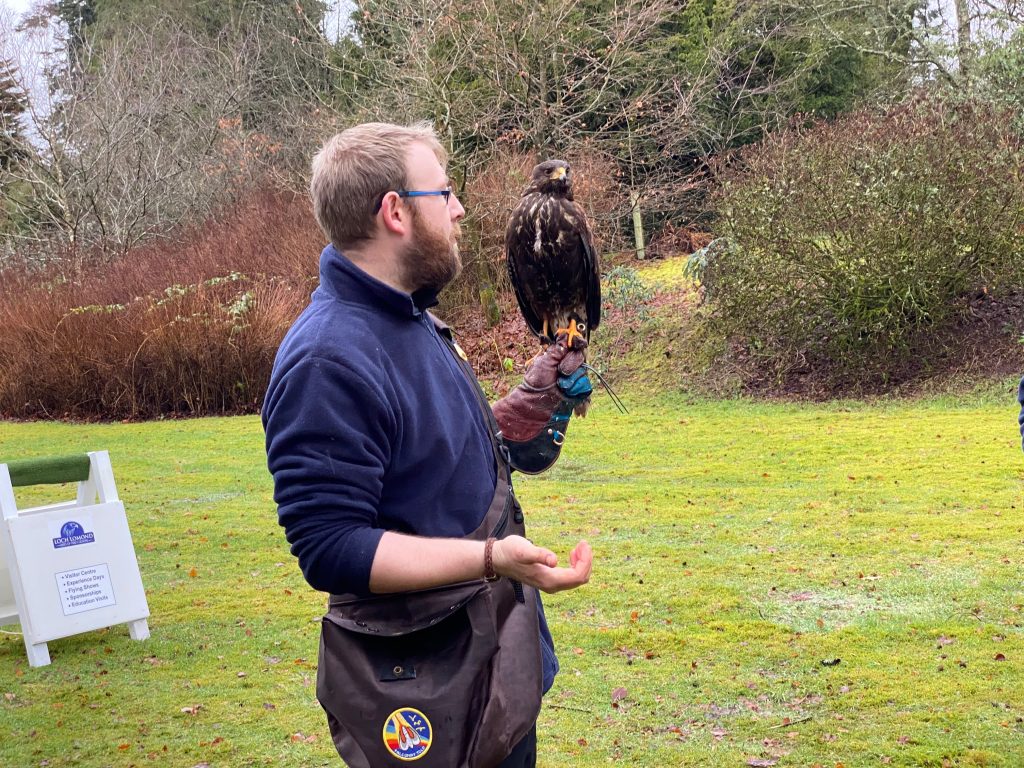
What impressed us was their passion and care for these beautiful birds. That was just the beginning of the relationship. We became a life members of the centre and generally get to visit them each year. We’ve sponsored birds for the children, grown up and young alike and have come to realise its a tough business to run, a labour of love battling against weather, seasonal openings, animal and human diseases, covid and bird flu.
Here’s Doris my recent sponsorship, she’s an American Red-tailed Hawk. Isn’t she splendid! I sponsored her for 12 months because no one else has yet, as she is fairly new to the characters at the centre – her somewhat damaged tail feathers tell of a time when she wasn’t in such as good a place as she is now. By sponsoring her, I can help ensure this centre can continue the good work that it has been doing for many years.
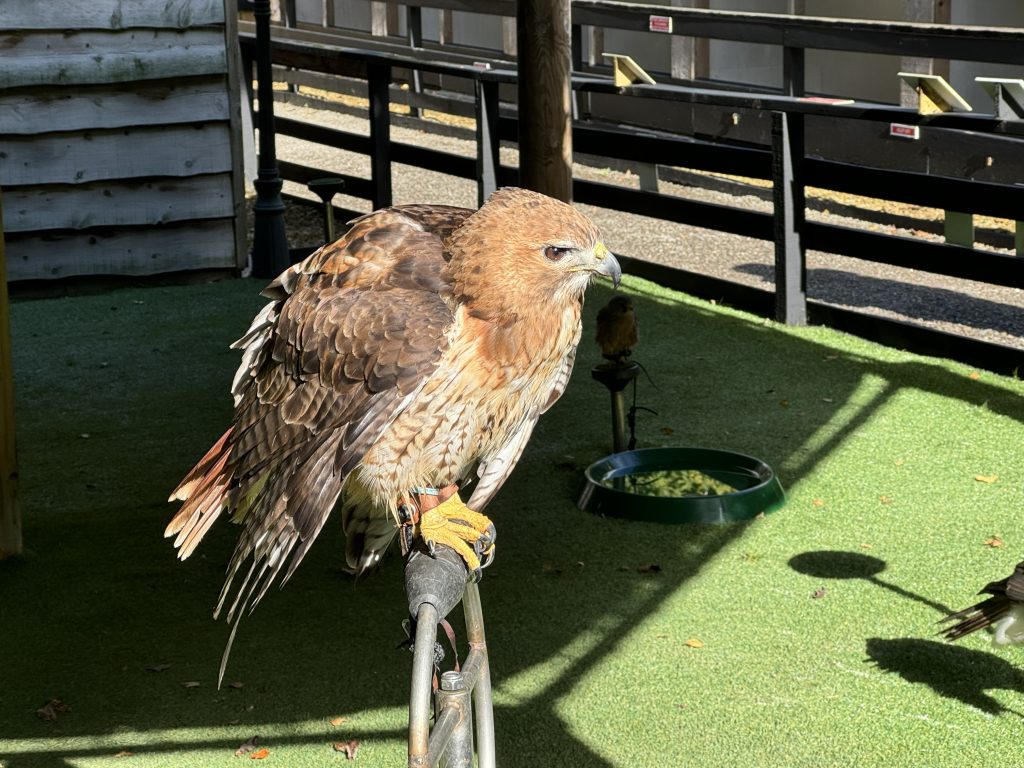
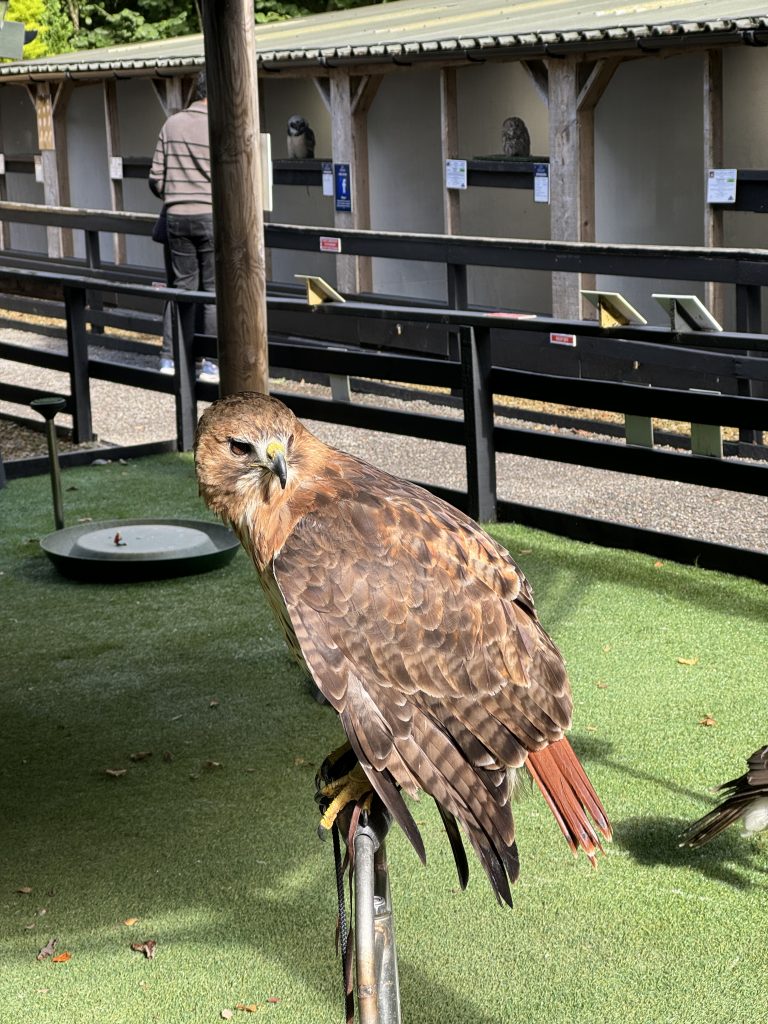
Addressing Tethering
Some of the birds at the Loch Lomond Bird of Prey Centre are tethered when they are outside on perches. Of course this is primarily for the birds safety, as well as the safety of visitors. Tethering helps prevent injuries that could occur from birds getting entangled in each other’s spaces, whilst allowing them to be outside, where they are happiest. It also allows for effective management and training, helping the birds acclimatise to human presence and handling, which is especially important for educational demonstrations. Tethering is done with specialized equipment designed to be comfortable and safe, ensuring that the birds remain physically secure and calm. While some may see tethering as restrictive, it is practiced under strict guidelines and welfare standards to ensure that birds remain healthy, are properly exercised, and are handled in a way that aligns with their natural behaviours.
Many of these birds in the wild spend only a small amount of time hunting, for instance, hawks spend 90% of their time resting! The point of telling you this is it’s normal for these birds to be sat for a long time, in one place. The ultimate goal is to provide a safe environment for birds that cannot be released into the wild, while using their presence to educate the public on conservation efforts.
HOW CAN YOU HELP? The obvious is to visit if you are in the area, experience the centre, take in the learning and the flying shows. You can also sponsor a bird online. Think about giving these sponsorships as gifts. Wouldn’t it be excellent for a young person to say visit the centre, see the birds and then know they are supporting that bird for a year through a sponsorship? Or book an ‘Experience’ such as a Hawk Walk, a Fly a Bird experience or one of my favourites, ‘Meet the Owls’. There is something to suit every pocket and making memories such as these are the best gifts. You can also become a life member and of course donate to the centre.
Links:
